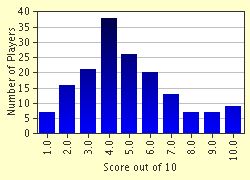Quiz Answer Key and Fun Facts
1. In 1815 the German Confederation was established. Which state was officially the leading power within the Confederation and presided at its meetings?
2. Which predominantly non-German-speaking area was included in the German Confederation?
3. In the period from c. 1820-60 Austria exercised a major direct influence on the affairs of a country outside Central Europe. Which?
4. In 1848-49 much of the Austrian Empire rose in rebellion against the Habsburg monarchy. In Hungary the rebellion proved exceptionally hard to suppress and the Austrian government accepted help from a foreign power in order to put down the Hungarian uprising. Which foreign power was it?
5. In 1859 the French army threw the Austrians out of Lombardy and handed the province over to Piedmont (in exchange for Nice and Savoy), thus kick-starting the unification of Italy. Some German nationalists saw the defeat of Austria as a wider defeat for Germany.
6. In 1866 Prussia went to war against Austria and most other states in the German Confederation. In English this is called the "Seven Weeks' War". How do the Austrians and Germans refer to this war?
7. When did the Austrian government remove the fortifications round the old city in Vienna?
8. Which of these was the leading industrial area of the Austrian Empire from about 1825 onwards?
9. This author was a highly perceptive observer and critic of Central Europe. His is best known for his unfinished novel "Der Mann ohne Eigenschaften" ("The Man Without Qualities"). In an earlier novel he provided a deeply shocking description of a boarding school for boys aged about 14-18 intending to proceed to military academy. Who was he?
10. Austria-Hungary was the second biggest country in Europe, and people and goods often had to travel very long distances. Austria claims to have established the first regular scheduled long-distance civil air service - in March 1918, with airmail too. Which route did it cover?
Source: Author
bloomsby
This quiz was reviewed by our editing team before going online.
Any errors found in FunTrivia content are routinely corrected through our feedback system.
